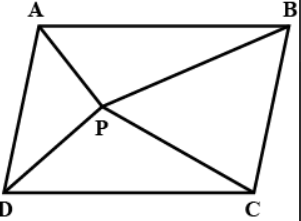2A+4B→3C+5D
In the given reaction, the rates of reaction with respect to A, B, C and D are
(a)rA (b)rB
(c)rC (d)rD
Arrange them in the ascending order of their magnitude.
a c b d
a d b c
a b c d
d b c a
The correct Answer is:A
r=−12Δ[A]Δt=−1Δ[C]4Δt=13Δ[C]Δt=15Δ[D]Δt
(i)rA (ii)rC
(iii) rB (iv)rD
Topper's Solved these Questions
- CHEMICAL KINETICS AND CHEMICAL EQUILIBRIUMBOOK - PEARSON IIT JEE FOUNDATIONCHAPTER - CHEMICAL KINETICS AND CHEMICAL EQUILIBRIUMEXERCISE - Level 2
24 Videos
- CHEMICAL KINETICS AND CHEMICAL EQUILIBRIUMBOOK - PEARSON IIT JEE FOUNDATIONCHAPTER - CHEMICAL KINETICS AND CHEMICAL EQUILIBRIUMEXERCISE - Level 3
10 Videos
- CHEMICAL KINETICS AND CHEMICAL EQUILIBRIUMBOOK - PEARSON IIT JEE FOUNDATIONCHAPTER - CHEMICAL KINETICS AND CHEMICAL EQUILIBRIUMEXERCISE - Level 3
10 Videos
- ATOMIC STRUCTUREBOOK - PEARSON IIT JEE FOUNDATIONCHAPTER - ATOMIC STRUCTUREEXERCISE - Level- 3 Concept Application
10 Videos
- METALS AND NON-METALSBOOK - PEARSON IIT JEE FOUNDATIONCHAPTER - METALS AND NON-METALSEXERCISE - Level-3 Concept Application
10 Videos
Similar Questions
On the basis of given reactions,the correct order of increasing oxidising of A,B,C & D is. [(a)A−+B→A+B− , (b) C+D−→noreaction , (c) C−+B→noreaction, (d) D+A−→D−+A]
View SolutionOn the basis of given reactions,the correct order of increasing oxidising of A,B,C & D is. [(a)A−+B→A+B− , (b) C+D−→noreaction , (c) C−+B→noreaction, (d) D+A−→D−+A]
View Solution
Knowledge Check
If a,b,c,d ∈R+ such that a,b,c and d are in H.P. then
Aa+d>b+cBa+b>c+dCa+c>b+dDnone of these
D and E are points on sides AB and AC respectively of ΔABCsuch thatar (DBC) = ar (EBC). Prove that DE ∣∣ BC.
View SolutionD and E are points on sides AB and AC respectively of ΔABC such that ar (DBC) = ar (EBC). Prove that DE∣∣BC.
View SolutionIn triangle ABC , if AD is the bisector of ∠A , prove that: Area(ABD)Area(ACD)=ABAC
View SolutionAD, BE AND CF are the perpendiculars from the angular points of a ABC upon the opposite sides. The perimeters of the DEF and ABC are in the ratio. 2rR (b) r2R (c) rR (d) r3R Where r is the inradius and R is circum-radius of the ABC
View SolutionIn Figure, P is a point in the interior of a parallelogram ABCD . Show that ar(APB)+ar(PCD)=12ar(^(gm)ABCD) aR(APD)+ar(PBC)=ar(APB)+ar(PCD)

View SolutionIn Figure, P is a point in the interior of a parallelogram ABCD . Show that ar(APB)+ar(PCD)=12ar(^(gm)ABCD) aR(APD)+ar(PBC)=ar(APB)+ar(PCD)
View SolutionIn Figure, △ABC and △DBC are on the same base BC . If AD and BC intersect at O , prove that Area (ABC)Area (DBC)=AODO.
View Solution
